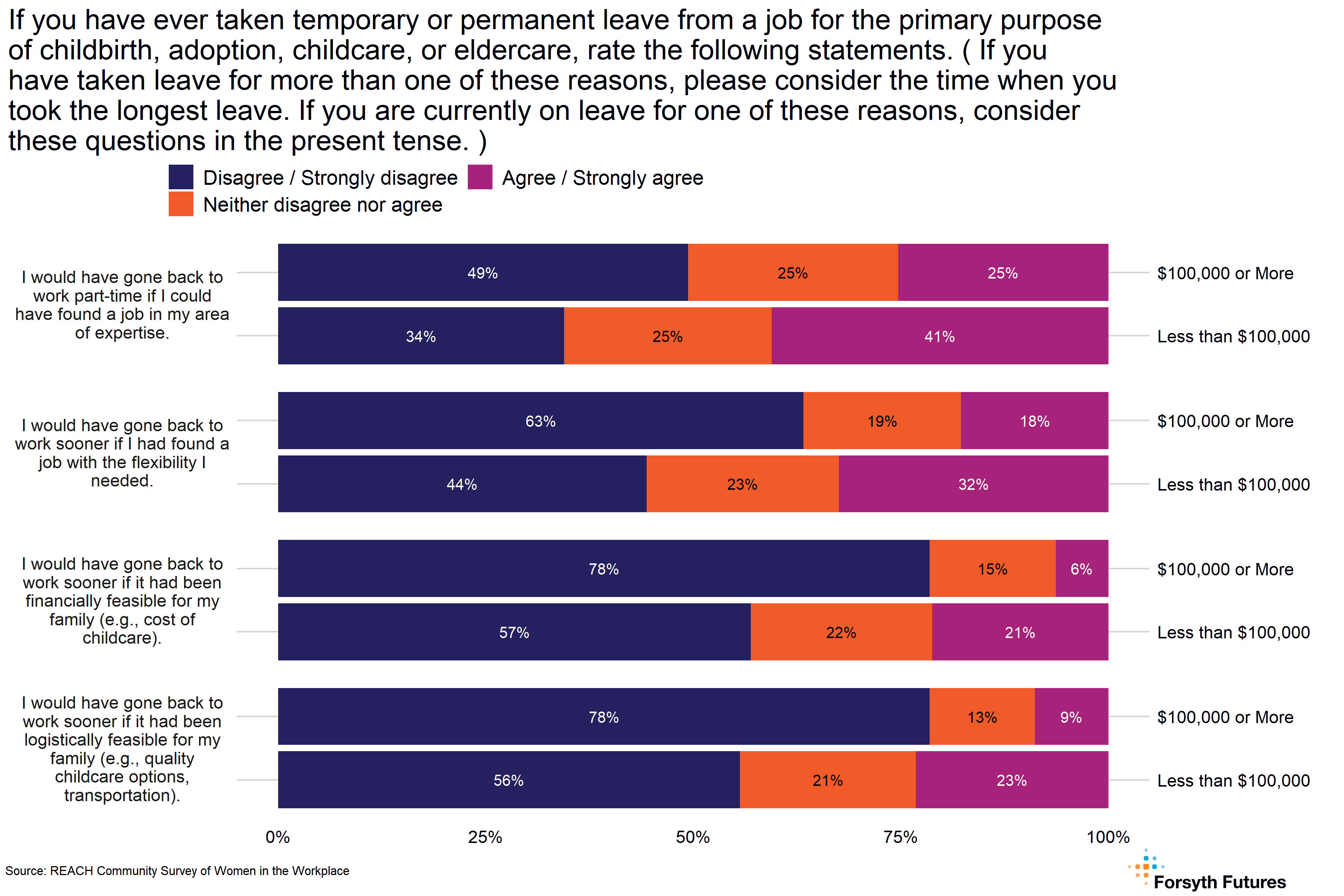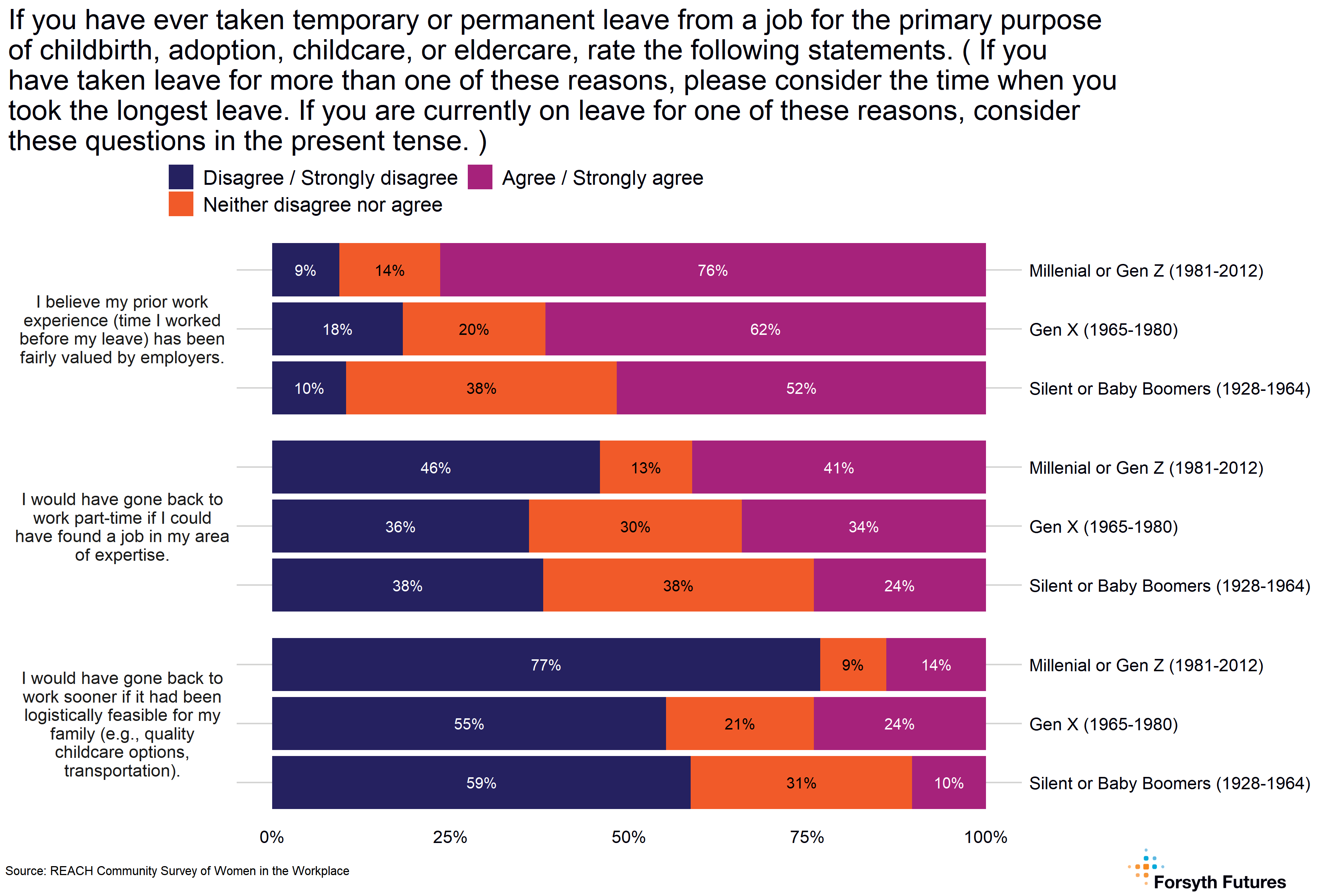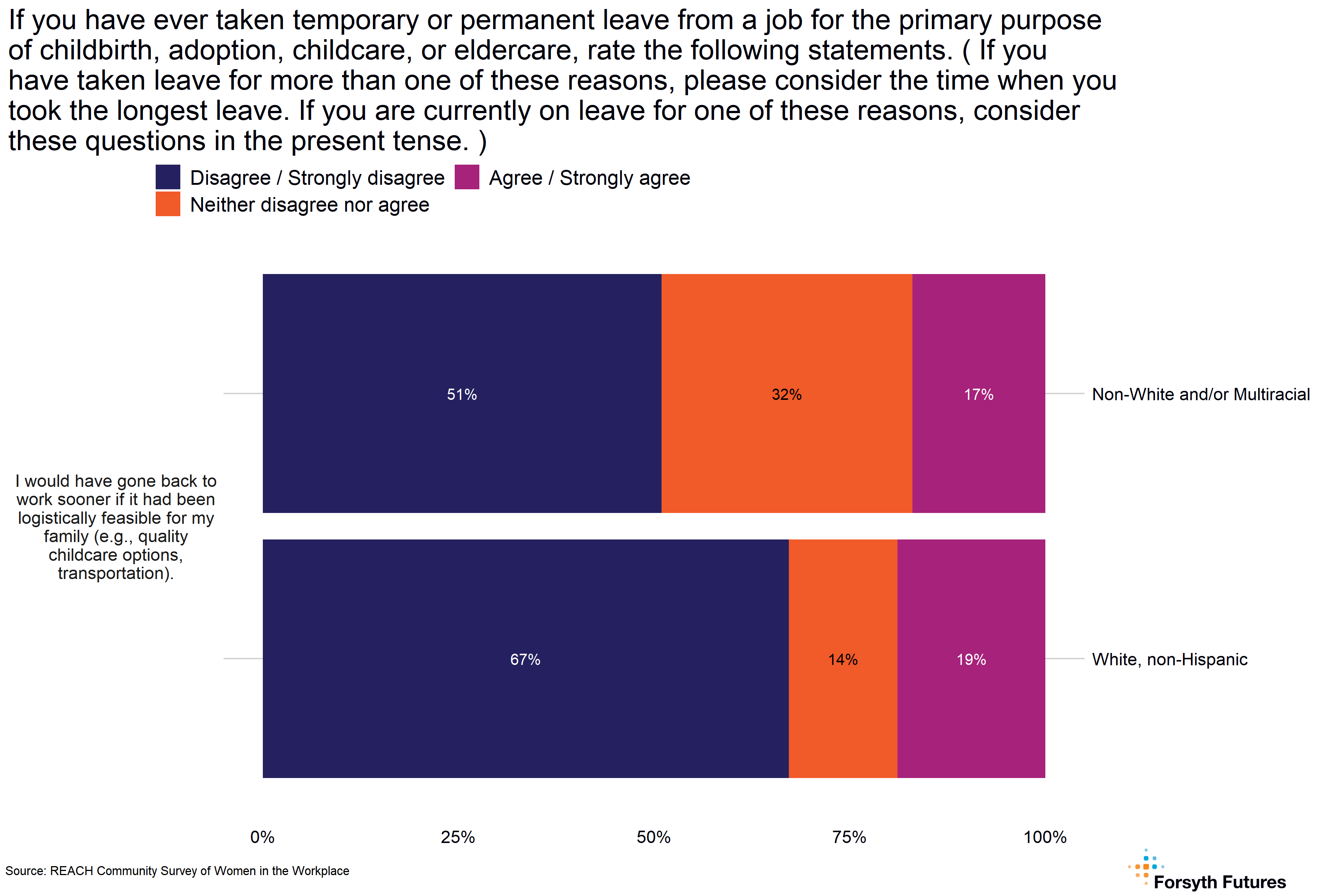Section 7 Home Life
7.1 Introduction
This section analyzes how women’s household responsibilities impact their career(s) or job(s). It includes the division of labor in the household and the allocation of required “second shift” (i.e., unpaid work done at home outside of working hours) work for working women at home.
The following graphs illustrate information about different groups based on the size of their employer, wage income, race / ethnicity, and race / ethnicity and wage income together. We only show the results we are sure are real, not just by chance. However, some of the visual differences between the groups may be due to chance. Also, just because we don’t see a difference between two groups, it doesn’t mean there isn’t a real difference. It just means we don’t have enough information to be sure.
7.2 Key Findings
- Analysts found differences in the amount of time taken off of work for childbirth, adoption, childcare, and / or eldercare by race / ethnicity, wage income, and race / ethnicity and wage income together.
- Women reported that they would have gone back to work sooner if it had been logistically feasible varied consistently across all of the demographic groups studied except for the size of their employer.
- There were statistically significant relationships between being reprimanded, penalized, or terminated from a job because of the demands of their family responsibilities and a woman’s wage income.
7.3 Temporary or Permanent Time Off for Family

Analysts found a statistically significant relationship between taking a temporary or permanent leave from a job for the primary purpose of childbirth, adoption, childcare, and/or eldercare and their race / ethnicity, wage income, and race / ethnicity and wage income together.
7.4 Perception of Leave





Among the disaggregations, analysts found the following statistically significant relationship between taking a temporary or permanent leave from a job for the primary purpose of childbirth, adoption, childcare, and/or eldercare:
- size of employer
- time off had a negative impact on career opportunities
- race / ethnicity and wage income together
- would have gone back to work sooner if it had been financially feasible
- would have gone back to work sooner if it had been logistically feasible
- wage income
- would have gone back to work part-time if could have found a job in the area of expertise
- would have gone back to work sooner if found a job with the flexibility
- would have gone back to work sooner if it had been financially feasible
- would have gone back to work sooner if it had been logistically feasible
- age / generation
- prior work experience has been valued by the employer
- would have gone back to work part-time if could have found a job in the area of expertise
- would have gone back to work sooner if it had been logistically feasible
- race / ethnicity
- would have gone back to work sooner if it had been logistically feasible
There were not any factors between taking temporary or permanent leave from a job for the primary purpose of childbirth, adoption, childcare, and/or eldercare that consistently had a significant relationship across the disaggregations. However, returning to work sooner, if it had been logistically feasible, had a statistically significant relationship across all disaggregations except the size of their employer.
